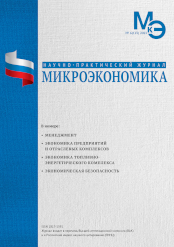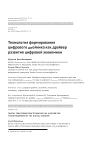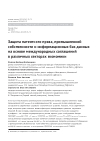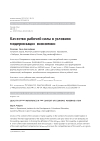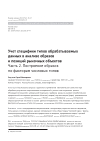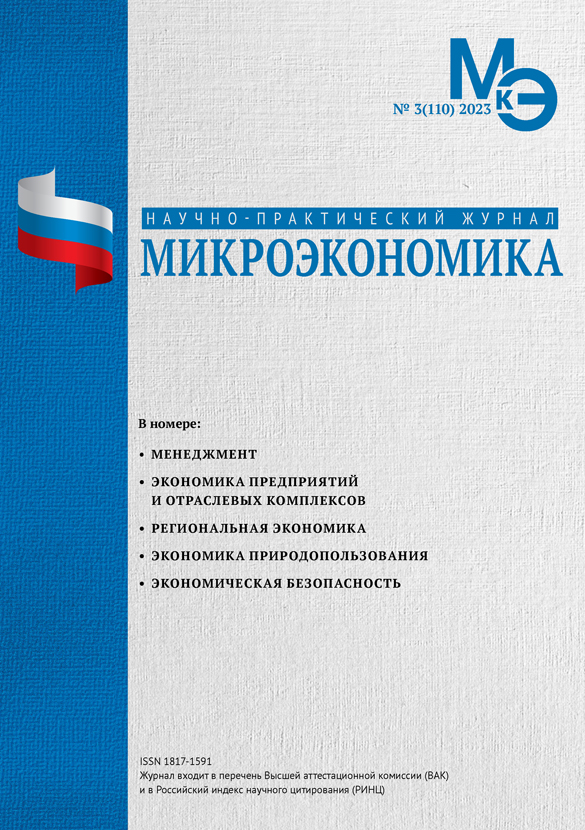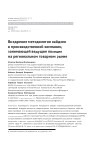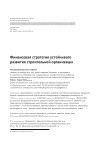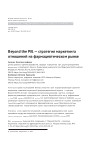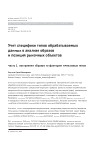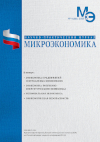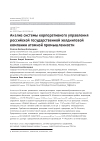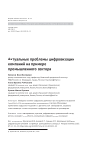DOI: 10.33917/mic-6.113.2023.55-70
The organizational and economic aspects of the protection of patent law, industrial property and information databases on the basis of international agreements in modern socio-economic conditions are considered. It is shown that in the modern world, copyright involuntarily is a factor «slowing down» the development of knowledge-intensive industries. In turn, the modern Russian patent system is in dire need of reform – as the popular press, scientists, lawyers, judges and ombudsmen say.
The authors conclude that protecting patents as property rights can improve socially constructive coordination that facilitates the complex process of commercializing innovations, thereby improving both access and competition. On the contrary, avoidance of industrial property may facilitate socially destructive coordination between large players using anti-competitive collusion strategies.
References:
1. Bachurin A.P., Filatov V.V., Zhenzhebir V.N., Diarov A.A., Gaidarenko L.V. Management of the regulatory framework for the use of trademarks for licensed products. Economic problems. 2010;4-38:10-14. (In Russ.).
2. Digilina O.B., Sazanov S.D., Teslenko I.B. Intellectual property and innovation: theoretical aspect. Quality. Innovation. Education. 2009;10 (53):14-16. (In Russ.).
3. Zhenzhebir V.N., Galitsky Yu.A. Information retrieval in patent research. In: Modern information technologies in education, science and industry. Sat. proceedings of the V International Competition of Scientific and Scientific Methodological Works of the III Competition of the Scientific School Community. Editor and compiler T.V. Piryazeva, 2017. pp. 36-40. (In Russ.).
4. Basic provisions of the Berne Convention for the Protection of Literary and Artistic Works (1886). URL: https://www.wipo.int/treaties/ru/ip/berne/summary_berne.html
5. Rukina I.M., Filatov V.V. Intellectual capital as an innovative resource of the knowledge economy. University Bulletin. 2012;18:182-193. (In Russ.).
6. Stasyuk K.D., Filatov V.V. International registration of trademarks with the World Intellectual Property Organization (WIPO). In the collection: Collection of scientific papers of the International scientific conference dedicated to the 75th anniversary of the birth of prof. A.P. Zhikhareva. Collection of scientific papers. Moscow, 2023. pp. 271-276. (In Russ.).
7. Teslenko I.B., Kovalenko S.Yu., Savelyev I.I., Nauchigin K.M. Intellectual capital and innovative development of the region. Monograph. Vladimir, 2014. 192 p. (In Russ.).
8. Filatov V.V. Conceptual issues of enhancing innovation activity in the Russian Federation. Monograph. Moscow, 2013. 60 p. (In Russ.).
9. Baldwin P. The Copyright Wars: Three Centuries of Trans-Atlantic Battle. Princeton University Press. 2016. p. 15.
10. Companies file infringement suits, Focus on Catalysts. 2010;9:2-3.
11. Himmelstein D.S., Romero A.R., McLaughlin S.R., Tzovaras B.G., Greene C.S. Sci-Hub provides access to nearly all scholarly literature. PeerJ Preprints, 2017.


